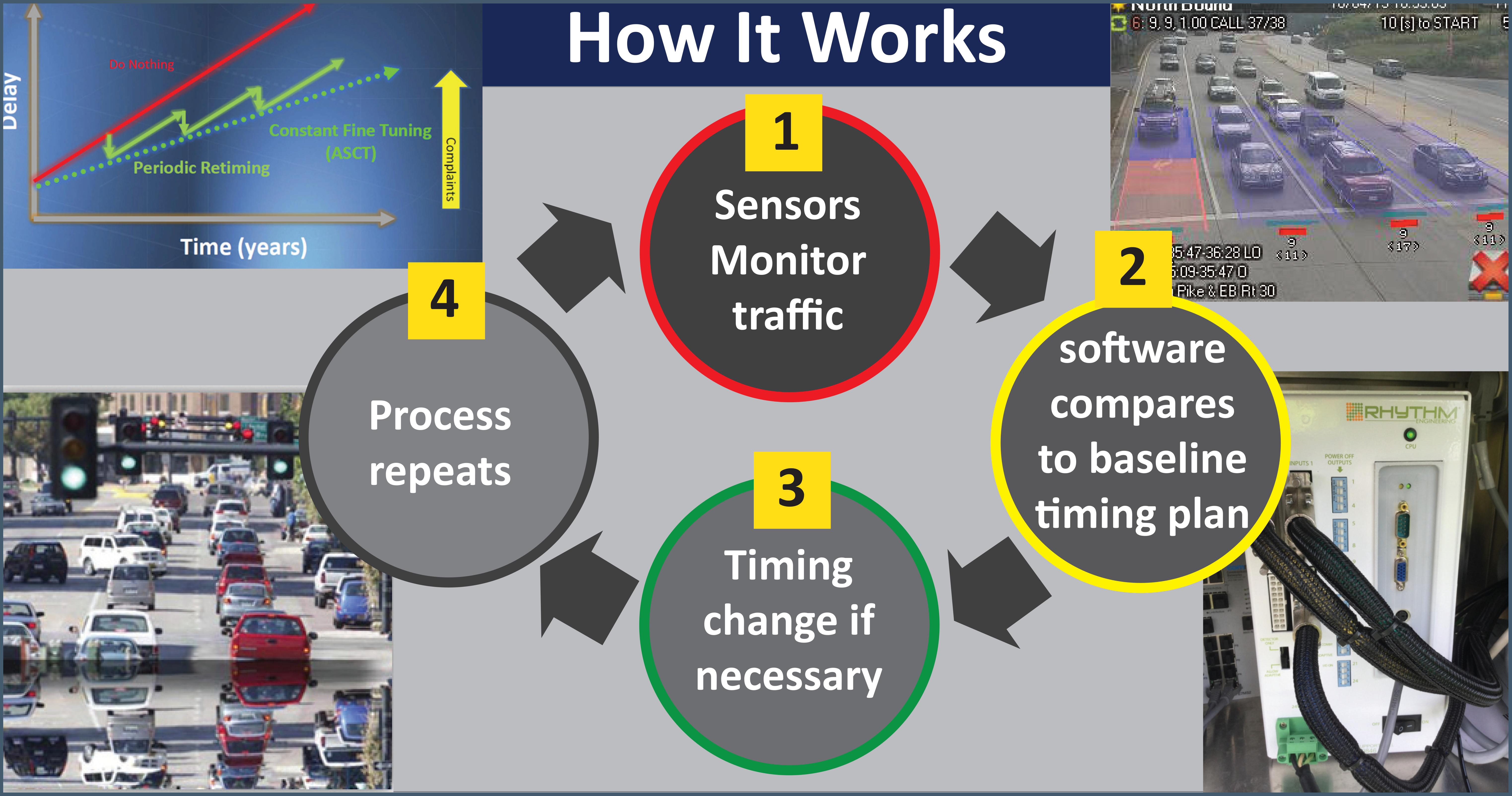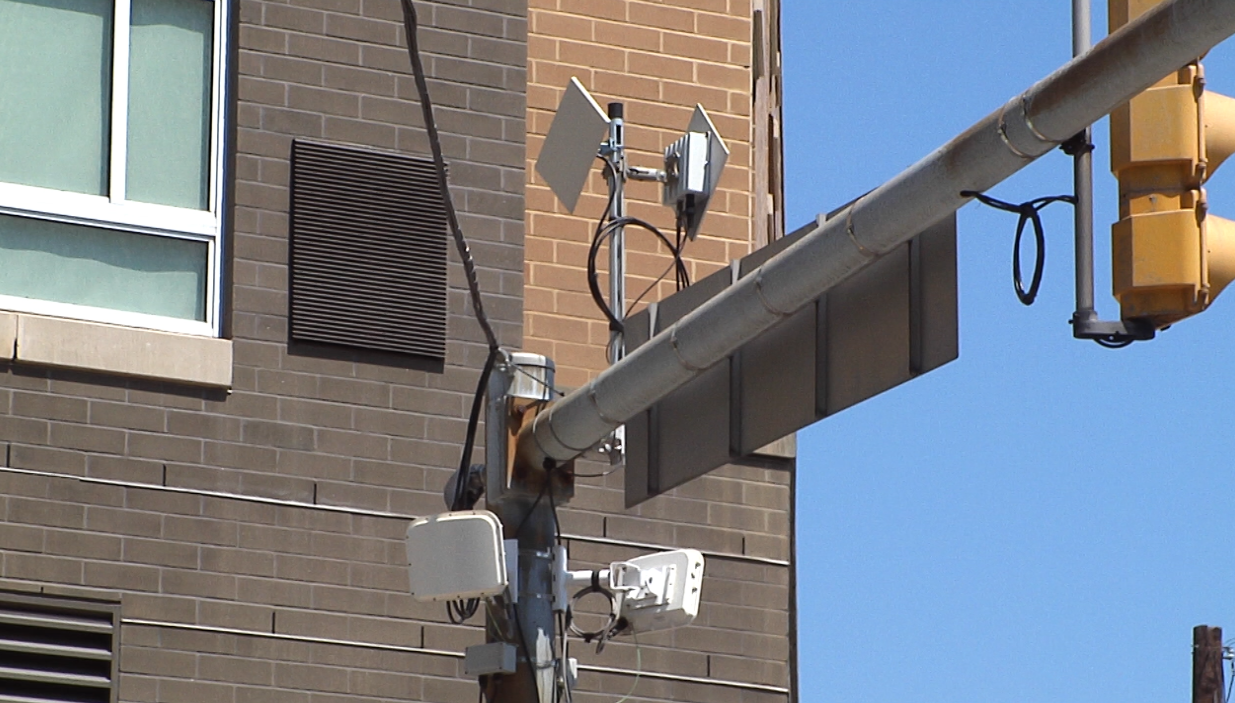Adaptive Signal Control Technology
How Does It Work?
Adaptive traffic signals use
strategically placed
sensors to monitor directional traffic flow, vehicle delay, and queues.
These sensors determine which
signals should be red and which should be green for optimized traffic flow.
The process is simple: the information gathered from the sensors is used to calculate
a traffic signal timing plan based on the current traffic situation. The adaptive algorithm shares the updated timing plan with the traffic signal controller.
ASCT helps improve
travel times for
motorists.
Various
adaptive signal control technologies are available from vendors, each with unique optimization
features achieving different success in various contexts. Adaptive signals are not a one-size-fits-all technology. A
systems engineering process is used to evaluate
products
to determine which will meet the operational objectives at a particular location before installation.
DID YOU KNOW ...
PennDOT is leading efforts statewide to support enhancements through the Green Light-Go Program. Through the initiative, PennDOT provides grant funding for local governments to support traffic signal upgrades; and, for select roadways across the Commonwealth, PennDOT has assumed traffic signal operations and maintenance.
What
Are
The
Benefits?
By
adjusting the timing to accommodate traffic patterns in real time,
adaptive signals
decrease wait times and delays at signalized intersections and reduce congestion by creating smoother traffic flow. This signal technology helps
increase safety by automatically adapting to unexpected changes in traffic conditions, such as special events, construction projects and traffic
incidents. Adaptive signals also
reduce
costs for businesses and
motorists
by decreasing the effects of
congestion on major routes, which can cause
excess delays and increase fuel consumption. For businesses,
congestion decreases productivity and increases labor costs.

Innovation in Motion
ASCT
was
implemented
by PennDOT District 3
on a project in Montoursville, Lycoming County in 2019. The technology was installed at three intersections on U.S.
Route
15 to help improve the flow of the heavy cross-state traffic. The Average Daily Traffic (ADT) volume is nearly 22,000 vehicles, of which nearly 10 percent are trucks. U.S.
Route
15 is the major north-south artery connecting Harrisburg and points south to Interstate 80, Williamsport and the north-central region to the New York State border.
Since the installation, congestion between the traffic signals in the corridor has been reduced around 40 percent.

Another
project included ASCT upgrades along a congested commercial section of U.S. Route 22 from Murrysville, Westmoreland County through Monroeville, Allegheny County. This roadway is an important travel corridor for
local residents and commuters into Pittsburgh. Prior to the installation of adaptive signals, local governments received frequent complaints about long traffic delays on Route 22. To address the problem, local governments partnered with PennDOT Districts 11 and 12 to install adaptive signals at 18 intersections, which improved traffic safety and reduced travel time on the 8.5-mile corridor by 10 to 15 minutes.
More Information
For more information about this innovation, contact the
STIC Management Team.